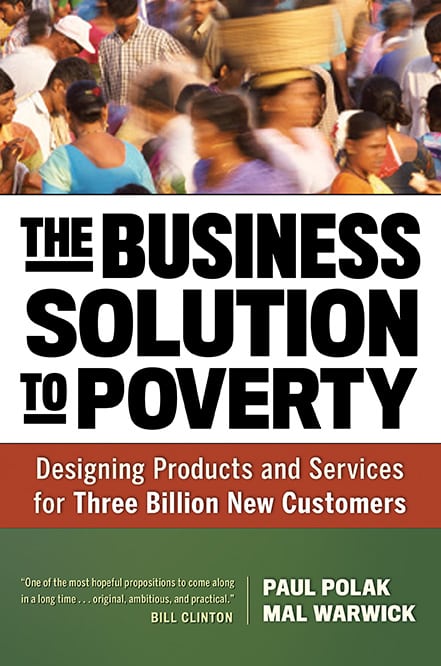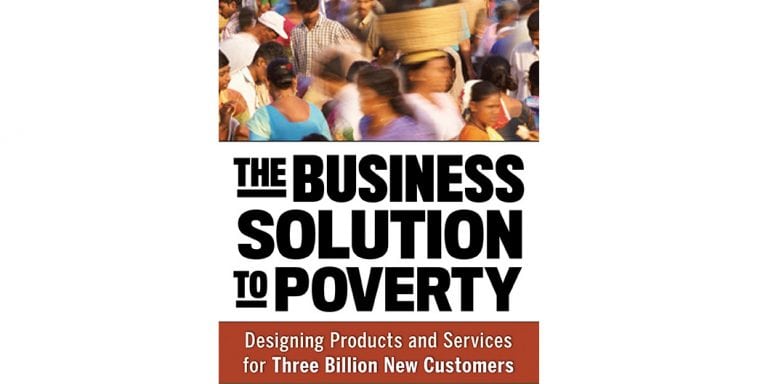Three and half billion people in developing countries make for a vast and mostly ignored market, say Paul Polak and Mal Warwick. In their new book, The Business Solution to Poverty, they describe how to develop a product that has the potential to change lives and turn it into a business that reaches 100 million customers.
The authors dive deep into the process, starting with how to get a winning idea, how to cut costs in production and finally how to market the product and distribute it to far-flung rural communities. We recommend the book as a foundation for entering the field of engineering for global development and launching a business that makes a difference.
One aspect of the book stands out as relevant to engineers and product designers, and that is how to cut costs. After you have a design for a product that meets basic needs and might improve lives in developing countries, you have to lower the cost. It has to be affordable to some of the world’s poorest people.
Learn from past designs. Today’s machines evolved from simpler tools. Sometimes a look back at how we did a task in the past can yield ideas for new low-cost designs. Update old, retired designs using new materials and ideas.
Target the most expensive components of the design. Take a critical look at your prototype. Swap out the most expensive pieces for less costly substitutes that will still be suitable for the customers.
Cut weight. The weight of a product can correspond to its cost and the costs of distribution. Find ways to reduce material and lose weight.
Forget about redundancy. Products engineered for customers in the global West can often perform far above their specifications. For example, a water pipe specified for 10 pounds per square inch might be built to withstand 30 pounds per square inch. But that kind of overkill can be costly, so cut it out.
No gimmicks. Build products that customers want without offering useless upgrades, add-ons or gimmicks that can increase the price.
Make it modular. Design products that can grow over time as customers earn more money. Rather than asking them to scrap their old machine and upgrade to a new more powerful version, allow them to buy components to improve the hardware they already own.
Use local materials. Find creative ways to substitute locally sourced materials and keep costs down.
Consider manufacturing locally. Making your product in the country where it is sold can create new jobs and it may also be cheaper.
Make the parts uniform and interchangeable. Avoid using three kinds of bolts when one will do. And a rake handle can be cheaper if it is interchangeable with a broom handle.
Don’t upsell durability. Impoverished customers don’t pay more for products that last longer. Instead, they buy cheaper products even if they will break down sooner than a higher quality version.
And finally, a bonus tip: Small is beautiful. E.F. Schumacher was right. Make your product the right size for your customers.
Related resources
Seven expert tips to help your invention succeed where others fail: Distribution
Learn how to distribute life-changing technologies effectively with lessons from one company’s experience in rural India.
Communities move to the center of the design process in a newly proposed methodology
A new methodology for appropriate technology maps the way to effective design, but it may need some improvement from the engineering community.
Ten TED Talks in humanitarian design
A collection of great talks about engineering and design in developing countries and everywhere that sustainability matters.

